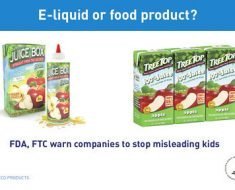The use of buprenorphine has spiked during the growing opioid crisis.

Getty Images
Buprenorphine is an essential drug in the fight against opioid addiction, it’s used to help addicts curb their cravings.
And with the opioid epidemic worsening, this drug is being used more and more.
Now this drug is increasingly posing a risk to children.
Between 2007 and 2016, more than 11,000 calls were made to U.S. poison control centers to report buprenorphine exposure in children and adolescents. Of those exposures, 86 percent occurred in children under the age of 6.
Reported buprenorphine exposures were also more likely than other prescription opioids to result in hospitalization and serious medical outcomes, including death.
“There is greater buprenorphine availability. With the opioid crisis, there’s an increasing number of patients in therapy. So, there’s more buprenorphine out there… and it’s now in more homes of young children,” said Rick Spiller, MS, D.ABAT, FAACT, a coauthor of the research, and director of the Central Ohio Poison Center at Nationwide Children’s Hospital.
Since 2007, the exposure rate of buprenorphine among children less than 6 years old has doubled. But, it has actually declined somewhat from its peak in 2010. During 2010 to 2011, the combination medication of buprenorphine and naloxone, sold under the brand name Suboxone, was the most common medication ingested that resulted in hospitalization among young children.
A growing crisis
The United States opioid crisis has been growing for decades. In 2016, more than 2 million people suffered from opioid use disorder and 11.5 million misused prescription drugs.
Buprenorphine, which was approved by the U.S. Food and Drug Administration in 2002, has been hailed as an important development in the armamentarium of opioid addiction therapies.
It’s also an opioid, but one that holds numerous advantages.
Buprenorphine activates the same receptors in the body as other prescription opioids, but its effect is subdued, meaning it is not easily abused to get high. It’s also an extended-release medication designed to help treat withdrawal symptoms over a longer period of time.
Generally viewed as being safer, the risk of overdose and respiratory depression (when a user stops breathing) are lower in buprenorphine compared to other opioids.
But experts are worried that the drug’s reputation as a safer alternative to other opioids is lulling patients into a false sense of security when it comes to keeping it out of the hands of kids.
“This is not widely available except for this addiction therapy. Nobody’s got it for pain, nobody’s got it for these other reasons,” said Spiller. “That target group may not be aware [of the risks to children]… they may not perceive it as potent as some of the other opiates they’ve had in the house, or that they’ve been using,” he said.
Despite buprenorphine’s safer characteristics when used by adults, children are still susceptible to respiratory depression, where breathing becomes slowed and ineffective. Incidents of respiratory depression were reported in about 9 percent of cases in children under 6.
These are life-threatening situations.
“When we’re talking about respiratory depression, we mean that’s something where they are in the hospital and we’re going to have to intervene,” said Spiller.
Interventions can include administering Narcan, commonly referred to as an “anti-overdose” drug, or in some cases, even intubation and being put on a ventilator to keep the child breathing.
Children may not exhibit signs of opioid overdose immediately either. In one prior study that the authors cite, the median time between exposure and respiratory depression was 4.4 hours.
“We’ve seen children, honestly, look just a little drowsy for several hours. They don’t stop breathing until six or seven hours [later],” said Spiller.
More education on buprenorphine’s risks
In order to decrease exposure of the drug in kids, Spiller and his team recommend several courses of action including implementing unit-dose packaging for buprenorphine and increasing education and awareness around the dangers of the drug to patients to whom it is prescribed.
Dr. Cyrus Rangan, the assistant medical director of the California Poison Control System, who was not affiliated with the study, agreed with the study’s recommendations.
“[Patients with opioid use disorder] need a fair amount of education to understand that this is not just a ‘take the edge off’ kind of drug, and it’s kind of mild. They should not be led to believe that it’s a mild thing to have around the house. They should be told absolutely that this is an opiate,” said Rangan.
“It should be treated like any other narcotic that is kept around the house and that one pill can cause severe effects in a child,” he said.
Rangan also supported more widespread implementation of unit-dose packaging for buprenorphine. Unit-dose packaging packages pills individually in a separate foil or plastic covering, similar to how most cold medicines are packaged.
“Unit-dose packaging, especially for drugs like this, is one of the most important things that we can do to prevent young children getting into more than one pill,” said Rangan. “There’s no question that with experience with lots of different pharmaceuticals, that unit-dose packaging is one effective means of limiting the amount of exposure for young kids.”
Both Rangan and Spiller espouse the age-old safety mantra that medicine of all kinds should be stored out of sight and out of reach of children.
If you or a family member accidentally ingests buprenorphine or other harmful substances, contact the United States Poison Control Center at 1-800-222-1222 or call 911.
Source: Read Full Article





